Physical Address
304 North Cardinal St.
Dorchester Center, MA 02124
Atherothrombosis of large vessels or embolic occlusion of distal vessels, resulting in absence of blood flow
Majority of infarcts result from the disruption and embolization of platelet thrombi or atherosclerotic plaque material, leading to obstruction of intracranial arteries
Increased risk of disease with diabetes, hypertension, smoking, family history, and hyperlipidemia
Accounts for 70% to 80% of all “strokes”
More common in men than in women
Increased incidence with age—1/1000 for ages 45 to 55 years, 1/33 over 85 years of age
Symptoms vary widely depending on size, location, and duration of the insult
Cerebral infarcts present suddenly, and symptoms depend on location of lesion and amount of brain compromised
Prognosis is dependent on severity of ischemic event
Immediate thrombolytic therapy can improve outcomes
Preventative therapy includes aspirin, antiplatelet medications, treatment of hypertension and diabetes, smoking cessation, and lowering of cholesterol
After 1 to 2 days, wedge-shaped lesion of hypodensity on CT and T1-weighted MRI in classic cerebrovascular distributions of blood supply
Diffusion weighted MRI can detect changes within minutes of ischemia
6 to 8 hours of infarction—no detectable findings
First noticeable change is subtle blurring of gray-white junction
24 to 48 hours postinfarction—brain swelling, hyperemia, and dusky discoloration in a well-defined vascular territory
Large infarcts lead to mass effect with possible herniations
Embolic infarcts with reperfusion lead to hemorrhagic areas of necrosis
No microscopic changes within 12 hours of event
12 to 48 hours: circumscribed areas of pallor with “red-dead neurons” (cytoplasmic hypereosinophilia on H&E stain and shrunken, pyknotic nuclei)
3 to 30 days (subacute phase) consists of macrophage infiltrate with cavitation of cortical layers two to six and loss of axons within lesion
Months to years: remote infarction typically consists of circumscribed organized area of cavitation with scattered macrophages and residual glial tissue
Typically not necessary
Primary brain hemorrhage
Glioma (may mimic early stages of infarction on imaging)
Active demyelination
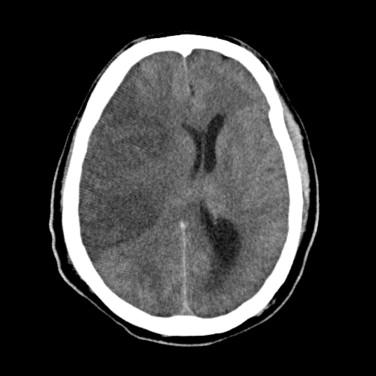
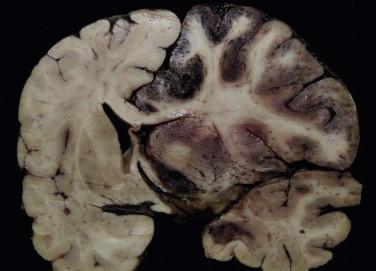
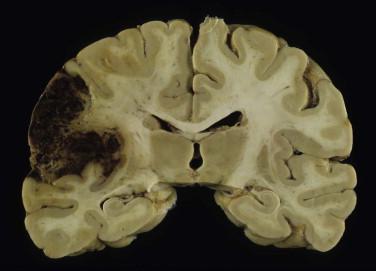

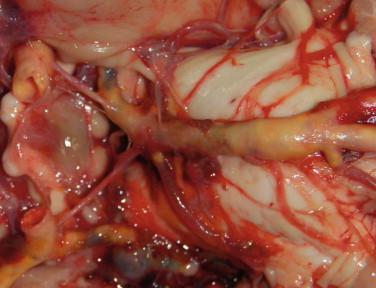
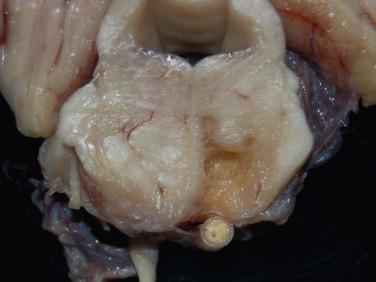
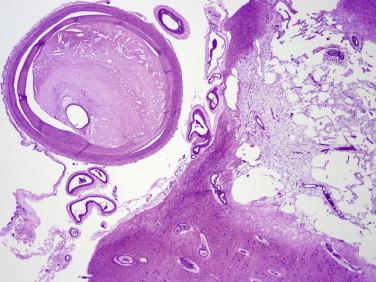
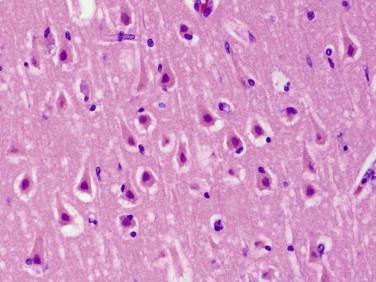
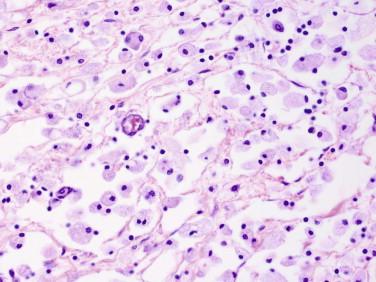

Most lesions are lacunar infarcts—usually smaller than 1 cm—caused by occlusion of deep perforating arteries; most commonly occur in the basal ganglia, thalamus, deep cerebral white matter
Become a Clinical Tree membership for Full access and enjoy Unlimited articles
If you are a member. Log in here